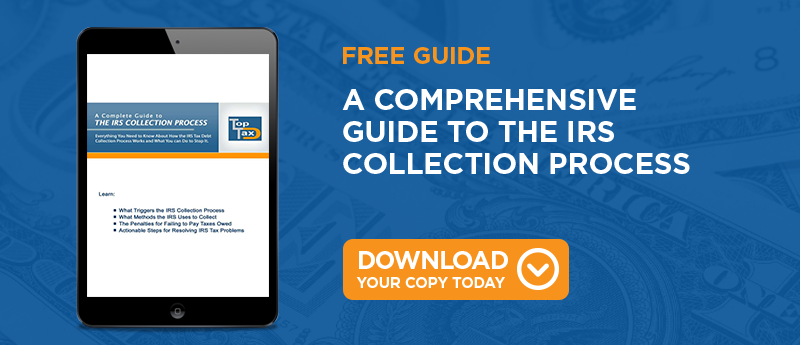
[Editor's Note: This article was originally published in September 2013 and has been updated for accuracy and comprehensiveness.]
What is the difference between a tax lien withdrawal and a tax lien release?
A tax lien withdrawal removes the IRS Notice of Federal Tax Lien from public record as if it never existed. A tax lien release shows the debt was paid, but the lien remains in public record as “released.” Withdrawals offer a cleaner outcome and are available after payment in full or sometimes through a direct debit installment agreement.
Dealing with a federal tax lien can be overwhelming for any taxpayer. When unpaid tax debt reaches the point of collection enforcement, the IRS has the legal authority to file a Notice of Federal Tax Lien (NFTL), which becomes part of the public record. This notice alerts creditors that the IRS has a legal claim against the taxpayer’s property—including real estate, personal assets, and potentially business assets—to secure repayment of the outstanding balance.
A tax lien adds pressure to an already stressful situation. It can interfere with refinancing a home, accessing business credit, and conducting real estate transactions. The good news: a federal tax lien is not permanent, and there are two primary methods by which the IRS can remove it once the tax debt has been satisfied or otherwise resolved:
- Tax Lien Withdrawal
- Tax Lien Release
Both methods ultimately result in the lien being removed, but the timing and impact on the taxpayer differ significantly. Below is a clear explanation of each process, how they work, and what taxpayers should know about choosing the best option available to them.
What Is a Tax Lien Withdrawal?
A tax lien withdrawal removes the public Notice of Federal Tax Lien from the record entirely—as if the lien were never filed.
A withdrawal is the best-case scenario because:
- It removes the lien from public records.
- It prevents lenders, title companies, and business partners from viewing the lien in public searches.
- It positions the taxpayer for improved financial standing after repayment.
You can request a withdrawal using IRS Form 12277 (Application for Withdrawal of Filed Forn 668(Y), Notice of Federal Tax Lien).
The IRS may approve a tax lien withdrawal under several conditions, including:
- The tax liability has been fully paid and the lien has been released.
- The taxpayer enters into a Direct Debit Installment Agreement (DDIA) for a balance of $25,000 or less, and meets additional requirements such as making at least three consecutive direct debit payments.
- Withdrawal will help the taxpayer collect funds to repay the IRS more quickly (rare, but possible).
- The IRS filed the lien in error.
In these situations, the IRS effectively agrees that the lien no longer serves a purpose and removes the notice from the public record.
What Is a Tax Lien Release?
A tax lien release occurs after the tax debt has been paid in full or is otherwise satisfied (e.g., through compromise, expiration of the statute, or discharge).
When a lien is released:
- The IRS clears the lien from public record.
- The taxpayer receives a Certificate of Release of Federal Tax Lien.
- The release must occur within 30 days of satisfaction of the tax liability.
Here is a key difference between withdrawals and releases:
A withdrawal removes the original lien notice as if it never existed.
A release acknowledges the lien existed, but shows it is no longer in effect.
Tax lien releases are automatic once payment is complete, but withdrawals require additional taxpayer action.
Does a Tax Lien Affect Personal Credit Scores?
The answer to this question has changed in the last several years. Federal tax liens no longer appear on consumer credit reports.
All three major credit bureaus—Experian, Equifax, and TransUnion—removed tax liens from personal credit reporting files. That means:
A tax lien will not directly lower your personal credit score.
A withdrawal is no longer needed to “protect” your credit score the way it once was.
However…
Tax liens are still part of the public record, and lenders, mortgage companies, and business credit evaluators can still find them. Tax liens can also still affect commercial/business credit, real estate transactions, and financing approvals.
So while the impact on consumer credit scores has changed over time, the importance of having a lien withdrawn still matters—especially for business owners or taxpayers looking to secure financing.

Which Option Is Better: Withdrawal or Release?
Bottom line: Tax lien withdrawal is better when it’s an option.
Here’s why:
| Feature | Tax Lien Withdrawal | Tax Lien Release |
|---|---|---|
| Removes IRS lien from public record | ✅ Yes | ❌ No — only marks it as released |
| Makes it appear as if the lien never existed | ✅ Yes | ❌ No |
| Required after debt is paid | ❌ No — optional, must be requested | ✅ Yes — automatic within 30 days |
Tax lien withdrawals provide the cleanest financial record and can eliminate issues with lenders, title companies, or business credit approvals.
What Should I Do If I'm Faced With a Lien?
-
Act quickly when you receive a Notice of Intent to File a Tax Lien (NFTL).
The best way to avoid a lien filing is to contact the IRS or a tax resolution firm immediately and address the debt before a lien is recorded. -
Consider a Direct Debit Installment Agreement if the balance is $25,000 or less.
This may qualify you for a lien withdrawal—even before the balance is fully paid. -
If you already paid the balance, request a withdrawal.
The IRS won’t automatically withdraw the lien—you must file Form 12277. -
Get professional help.
Tax experts, like those at Top Tax Defenders, can often obtain a withdrawal faster and ensure the IRS processes it correctly.
Final Thoughts
While both a tax lien withdrawal and a lien release remove the IRS’s legal claim, the withdrawal provides the best outcome, especially for taxpayers who may need to apply for financing, sell property, or maintain a clean public financial record.
Resolving a federal tax lien doesn’t have to be overwhelming—you have options, and the sooner you act, the more choices you’ll have. Schedule a free consultation with our team of tax experts today who will fight to get your lien resolved.



